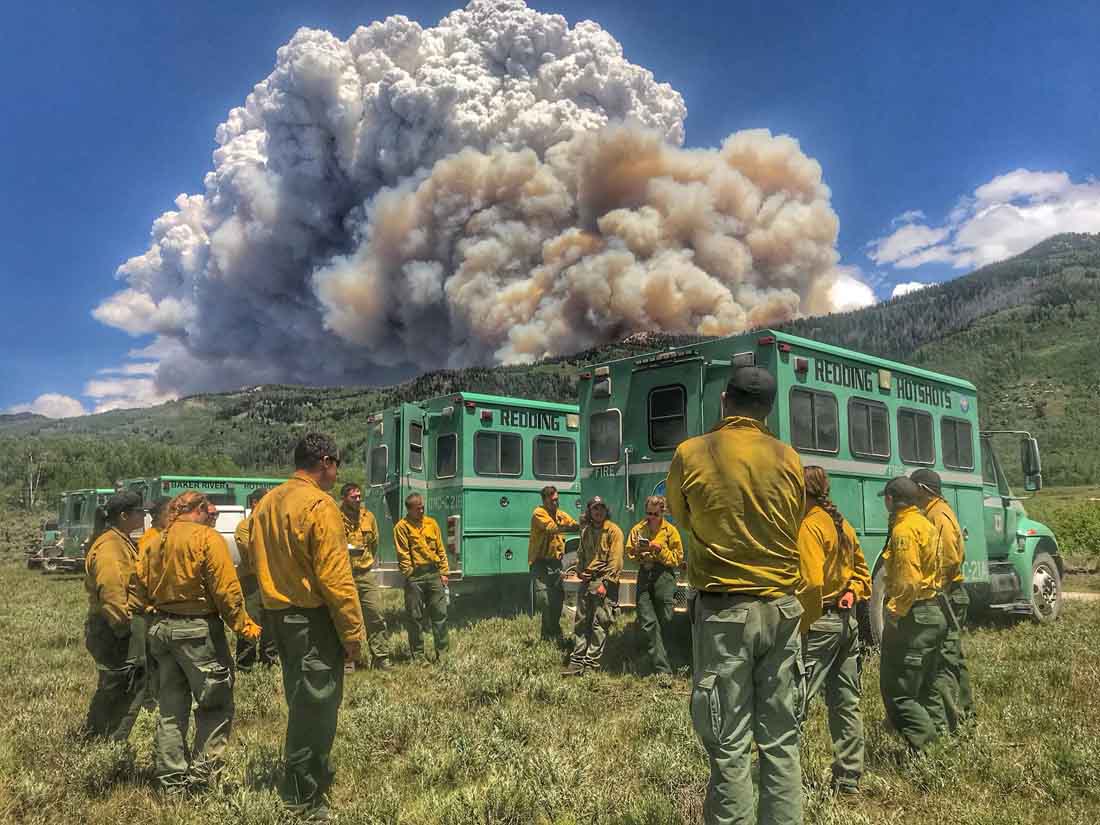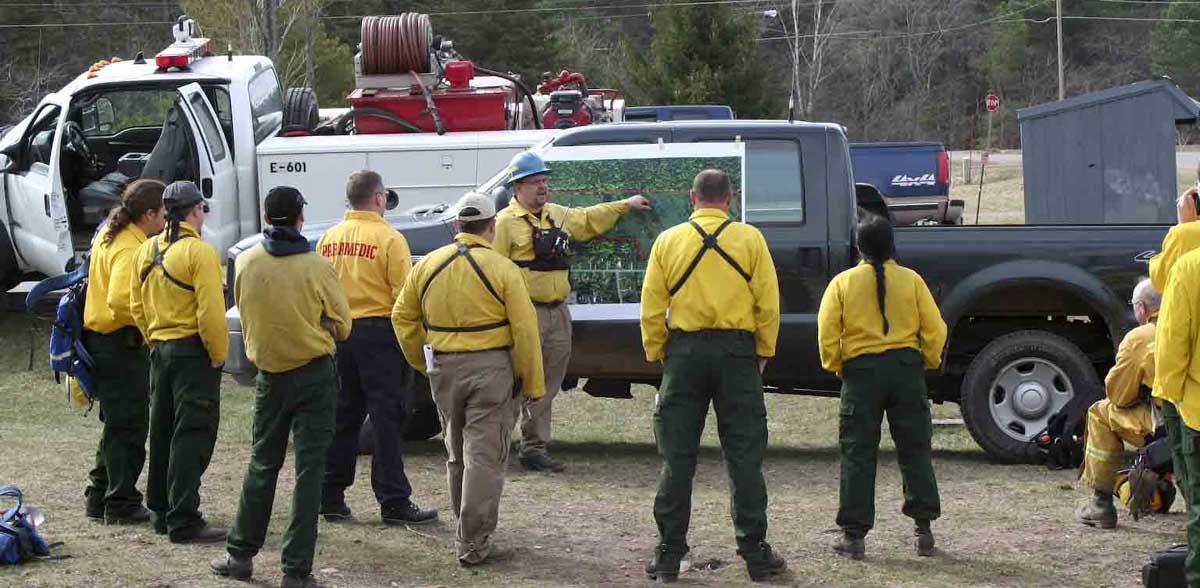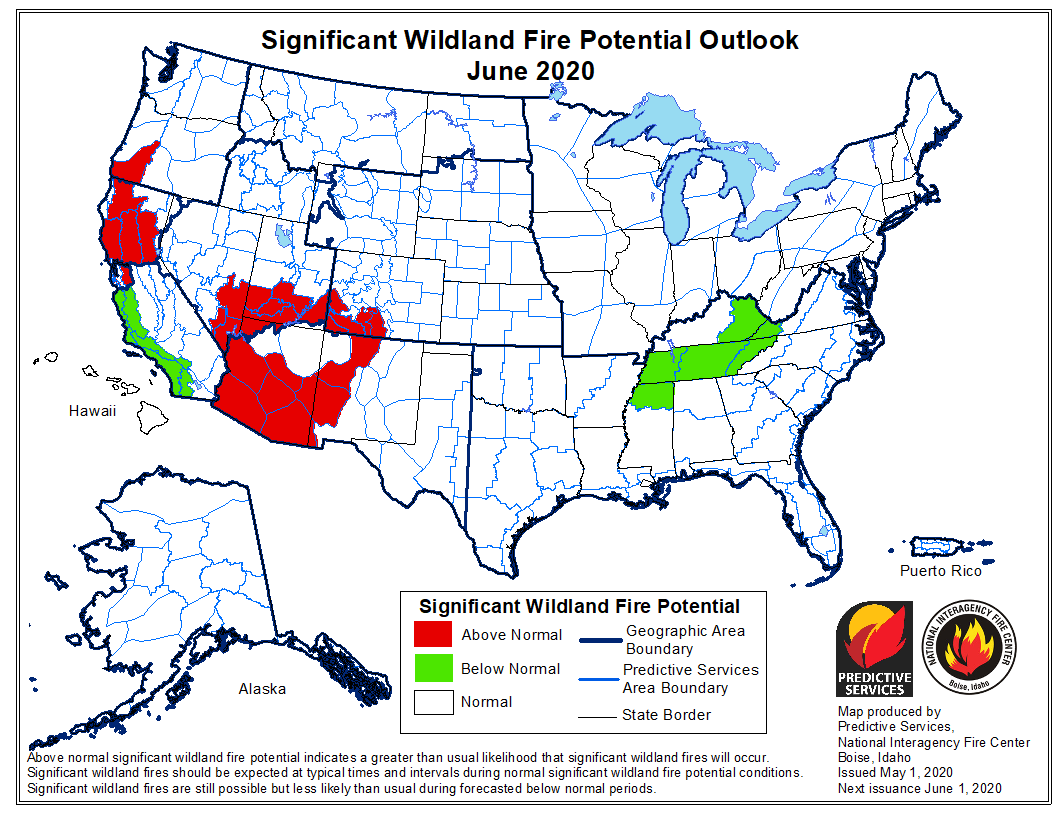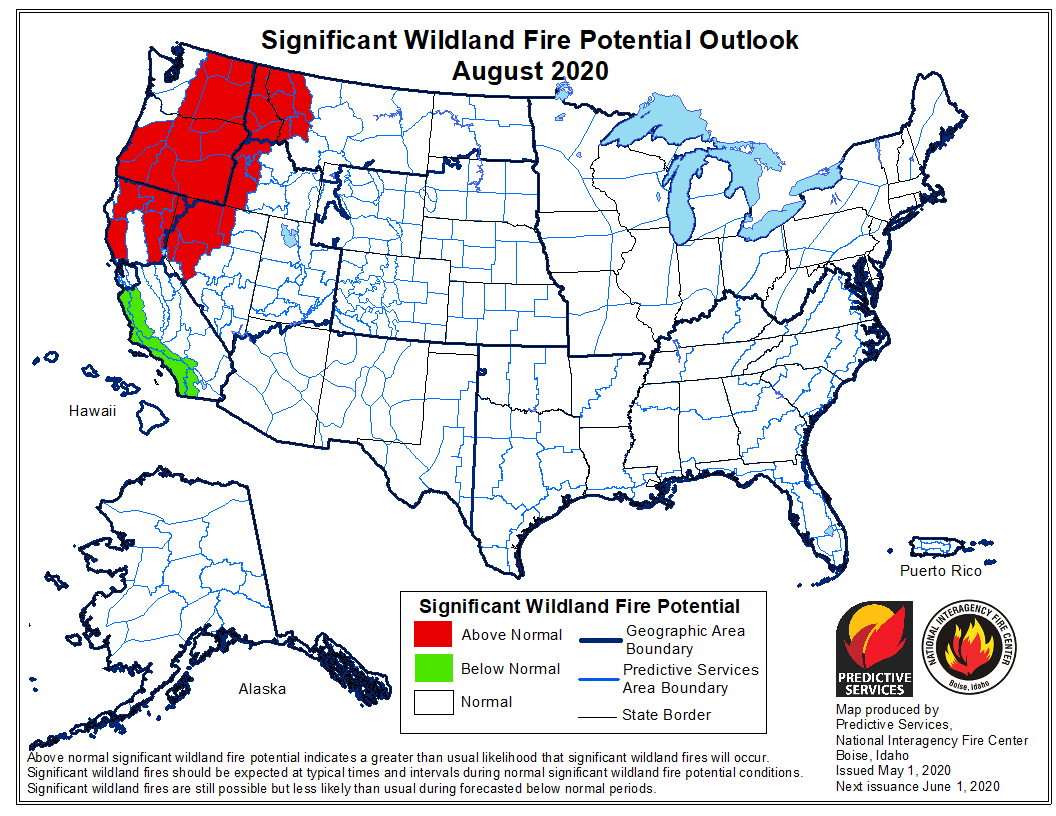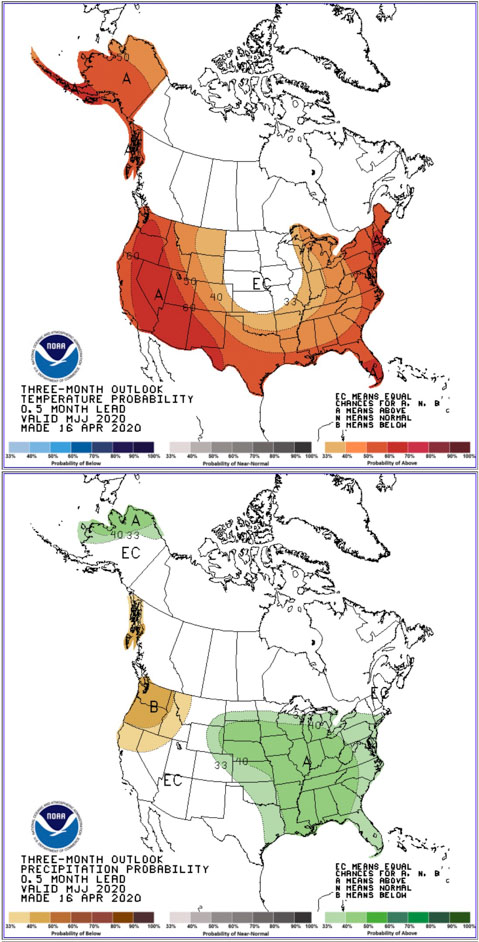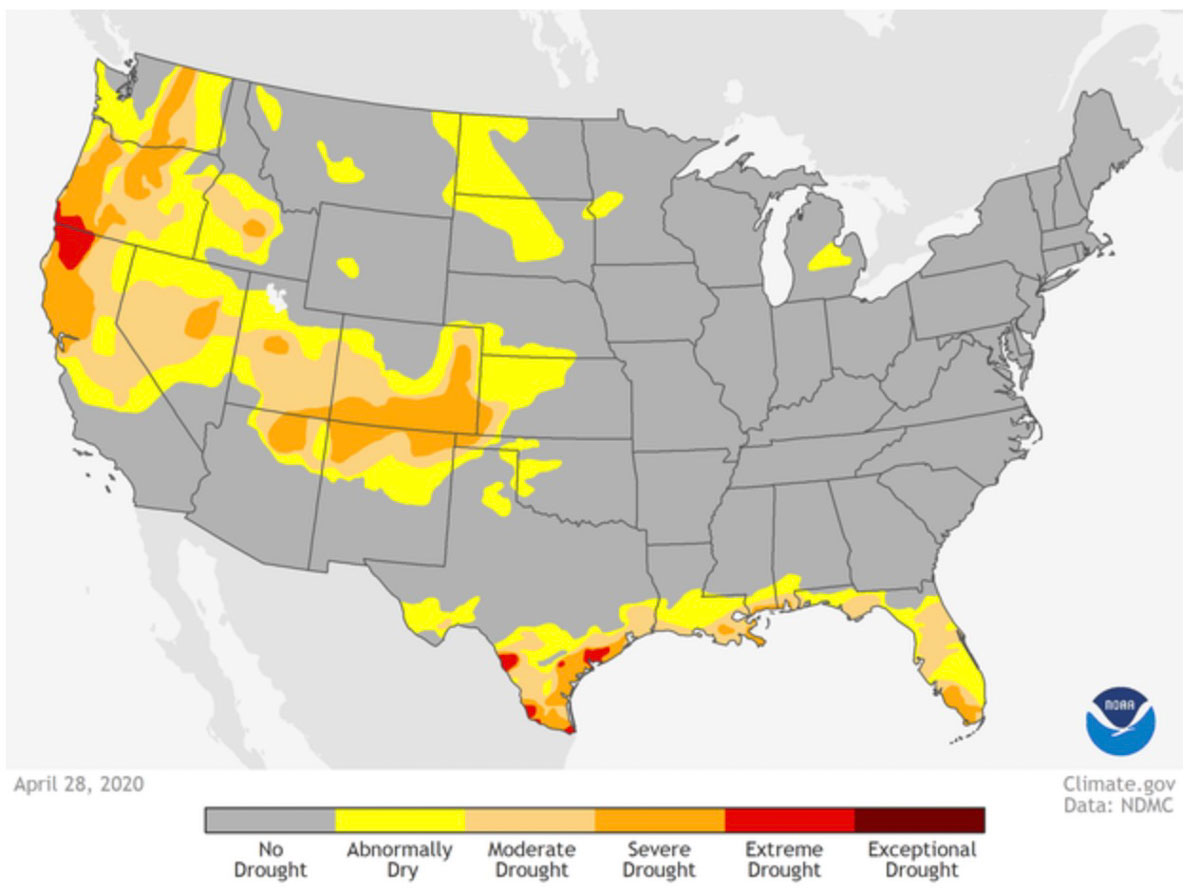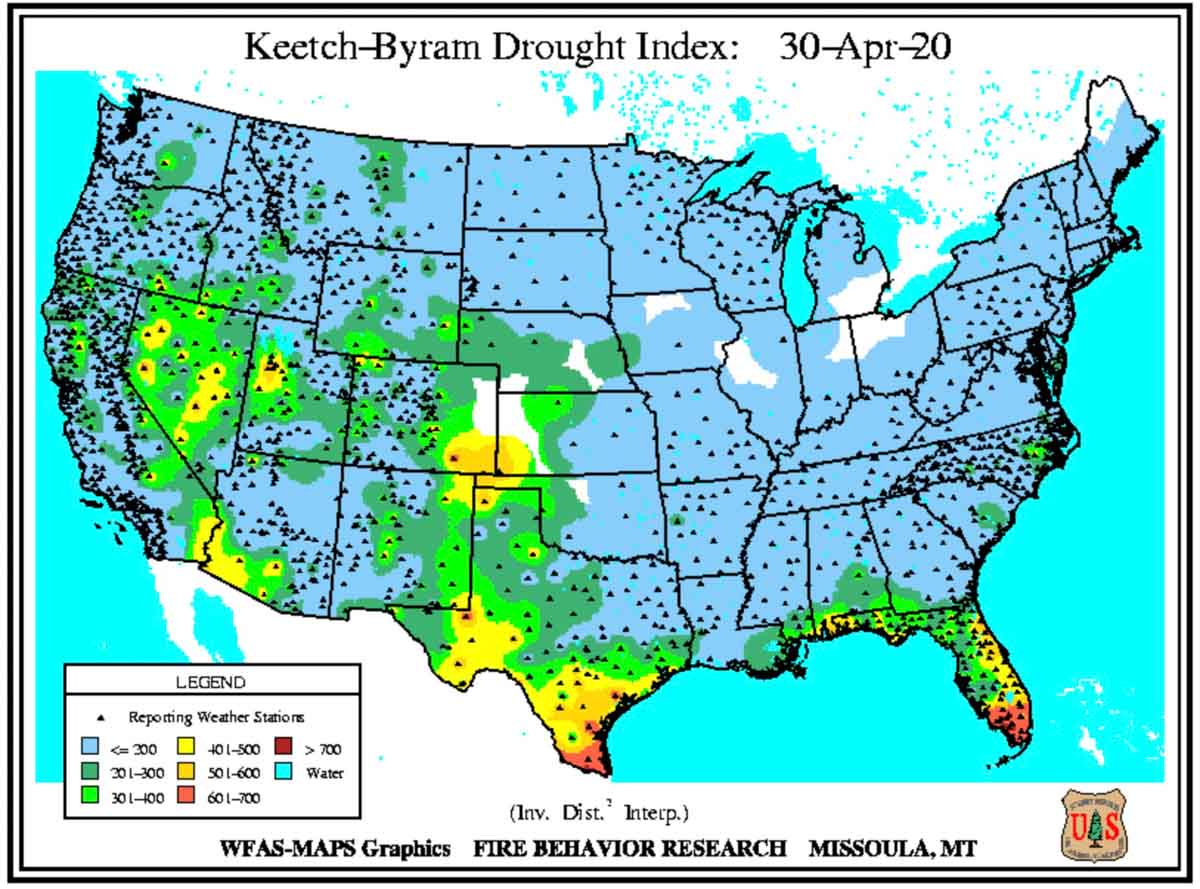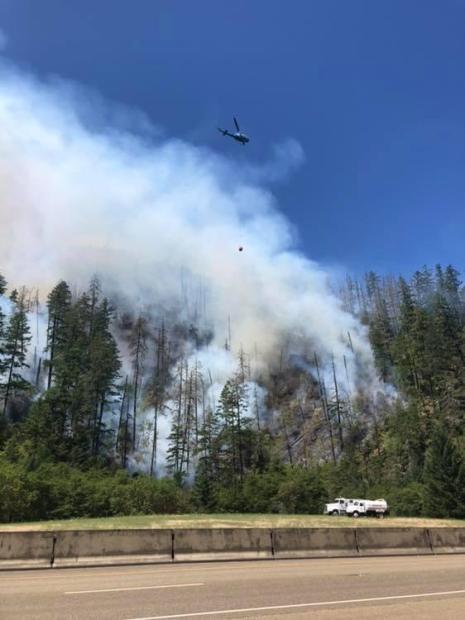
The Verde Fire on the Coronado National Forest in southeast Arizona on April 17, 2020 was not large. The only size mentioned in the Rapid Lesson Sharing document was two acres at the initial size-up. The resources included two engines, a fire module, a hotshot crew, and a helicopter with firefighters.
But an incident within an incident that required a helicopter extraction showed that suppressing a wildfire while hampered by COVID-19 protocols requires significant modifications in what used to be standard operating procedures.
The issues that were identified can’t necessarily be called “lessons”, since there are no obvious solutions or best practices for some of the challenges.
Below are excerpts from the document:
Initial attack resources were dispatched to the Verde Fire at approximately 1630 on Friday April 17. Responding resources included: Helicopter 320, Coronado National Forest (CNF) Engine 351, CNF Engine 652, Patrol 552, Saguaro Fire Module, and the Aravaipa Interagency Hotshot Crew. The fire was initially sized-up at approximately two acres. The helicopter crew immediately began work securing the edge, utilizing the helicopter for bucket support. Responding ground resources were working to identify the best access, either by UTV or on foot. Local engines identified the area of the fire as difficult to access. Additional UTVs were delivered to the incident.
At 2000 the IC called Dispatch with a “Yellow” medical, requesting a helicopter for extraction of a firefighter with a broken ankle injury.
[…]
Lessons and COVID-19 Insights and Observations
Resources
1. With resources being held locally it creates a necessity to create “throw together” crews to meet the need. The Verde Fire ended up having five districts and four different agencies represented on the fire. Whereas the ability to order-up a couple of crews who have been self-contained generates much less intermingling of individuals.
2. Tracking contacts. As folks intermix on a fire assignment and then go back to their respective units, how are individuals tracking their interactions on a daily basis in case of contact with a COVID-positive individual? There will be a need to backtrack interactions to inform others who have also potentially been in contact.
3. What about interagency incident responses? If agencies have conflicting protocols, what do the employees of interagency districts adhere to?
Operational
1. The ability to implement COVID-19 mitigations—social distancing in particular—was highly dependent on operational tempo. The higher the tempo, the tougher it was to maintain recommended distance.
2. ATV/UTV helmets. With COVID there will be no sharing of ATV helmets. Therefore, what is the alternative? Either no ATV helmets but the wearing of fireline hardhats instead, or designating specific operators per incident? Fires are fluid so the reality of one single designated operator may not be realistic. There needs to be clear guidance about helmet use in the era of COVID.
3. Surpassing 2:1 Work/Rest on IA. On the Verde Fire resources surpassed 2:1 during the IA stage. Usually, Standard Ops is to send drivers to pick up sleep-deprived resources. In this scenario it would require four drivers to get into one vehicle together, drive out to the fire, then get into four different vehicles with the firefighters—cross-exposing one another. What is the new procedure for such logistical situations?
4. There needs to be a recognition that fighting fire is not the IWI of COVID-19, but the other way around. If the intent is to fight fire, there needs to be an understanding that the COVID-19 social distancing recommendations cannot be fully adhered to when engaged in firefighting. A simple need to bump a rig out of the way at a moment’s notice is a good example.
5. [Building off of #4 above.] The question that needs to be answered: Does a lack of completely adhering to COVID measures mean less engagement or not?
Incident Within an Incident
1. COVID measures cannot be adhered to during an IWI. At the very least, an EMT will need to interact with the patient. If there is a need to pack the patient off the hillside, the interactions obviously increase exponentially. There was a broken ankle injury that occurred after sunset on the Verde Fire, which obviously meant patient care would be necessary.
2. Hospital Liaisons (or anyone else who might usually accompany) are currently not allowed into hospitals. It was quickly learned with the Verde Fire injury that liaisons will not be allowed into the hospital. This means that there needs to be very clear information accessible to every district/unit/crew lead about what to do, which forms to send to the hospital, and who needs to fill them out. The question is: Who should the point of contact be within the hospital hierarchy to ensure that these forms are being filled out by the physician prior to discharge?
3. Why isn’t there a Duty Officer for [Albuquerque Service Center’s] injury department? Injuries that take place on a fire aren’t relegated to business hours. How can this be rectified? The Verde Fire injury happened on Friday. The injured party was in surgery Saturday morning. Due to the timing of this incident (just before the weekend), a case number could not be generated until Monday. This critical delay over the weekend has the potential to cause problems for the patient regarding billing issues.
4. Should the injured person also fill out a CA-2 due to potential exposure of COVID-positive people while in the hospital? This question speaks to how protected our people are in general. Are firefighters in the “High-Risk” category? If they are, does that mean that if someone becomes COVID positive that the exposure will be assumed to have been on the job? If firefighters are not in the “High-Risk” category what does that mean?
Other Considerations
1. This fire was human-caused. The high level of recreation use in the area is creating more opportunities for fire starts. If certain types of recreation were closed, along with fire restrictions being put into place, it would bring down the number of fire starts, thereby reducing the frequency of potential COVID exposure for firefighters.
2. This IWI (along with the resources involved) highlighted the benefits that a “fire service” could provide regarding clear intent, objectives, universal protocols/procedures, etc.


